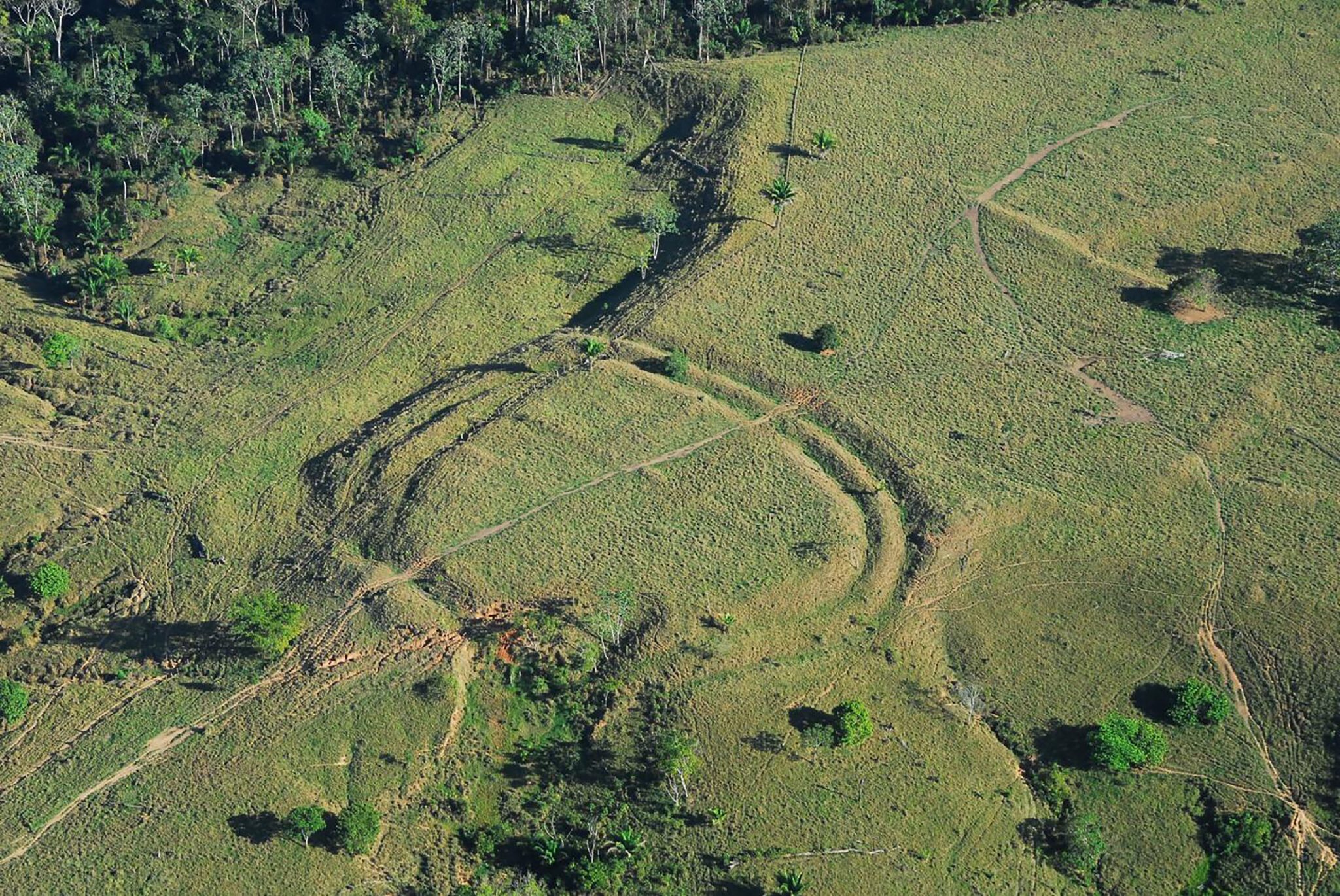

Long before European settlers arrived in the Americas in 1492, the Amazon rainforest was transformed for thousands of years by indigenous people who carved mysterious circles into the landscape, researchers said Monday. While the purpose of these hundreds of ditched enclosures, or geoglyphs, remains unclear, scientists say they may have served as ritual gathering places. Modern deforestation — coupled with aerial photographs of the landscape — helped reveal some 450 of these geoglyphs in Acre state in the western Brazilian Amazon.The research was carried out by Jennifer Watling, post-doctoral researcher at the Museum of Archaeology and Ethnography, University of São Paulo, when she was studying for a PhD at the University of Exeter. / AFP PHOTO /
MIAMI, United States (AFP) — Long before European settlers arrived in the Americas in 1492, the Amazon rainforest was transformed for thousands of years by indigenous people who carved mysterious circles into the landscape, researchers said Monday.
While the purpose of these hundreds of ditched enclosures, or geoglyphs, remains unclear, scientists say they may have served as ritual gathering places.
Modern deforestation — coupled with aerial photographs of the landscape — helped reveal some 450 of these geoglyphs in Acre state in the western Brazilian Amazon.
“The fact that these sites lay hidden for centuries beneath mature rainforest really challenges the idea that Amazonian forests are ‘pristine ecosystems,'” said lead author Jennifer Watling, a post-doctoral researcher at the Museum of Archaeology and Ethnography, University of Sao Paulo.
Archeologists have found very few artifacts from the areas, and scientists suspect the structures — which span 5,000 square miles (13,000 square kilometers) were not built as villages or for defensive reasons.
Rather, they believe humans altered the bamboo forests and built small, temporary clearings “concentrating on economically valuable tree species such as palms, creating a kind of ‘prehistoric supermarket’ of useful forest products,” said the study in the Proceedings of the National Academy of Sciences, a peer-reviewed US scientific journal.
The research is based on state-of-the-art techniques used to reconstruct some 6,000 years of vegetation and fire history around two geoglyph sites.
Watling, who did the research while studying at the University of Exeter, said the findings show the area was not — contrary to popular belief — untouched by humans in the past.
“Our evidence that Amazonian forests have been managed by indigenous peoples long before European contact should not be cited as justification for the destructive, unsustainable land-use practised today,” she added.
“It should instead serve to highlight the ingenuity of past subsistence regimes that did not lead to forest degradation, and the importance of indigenous knowledge for finding more sustainable land-use alternatives.”
© Agence France-Presse
